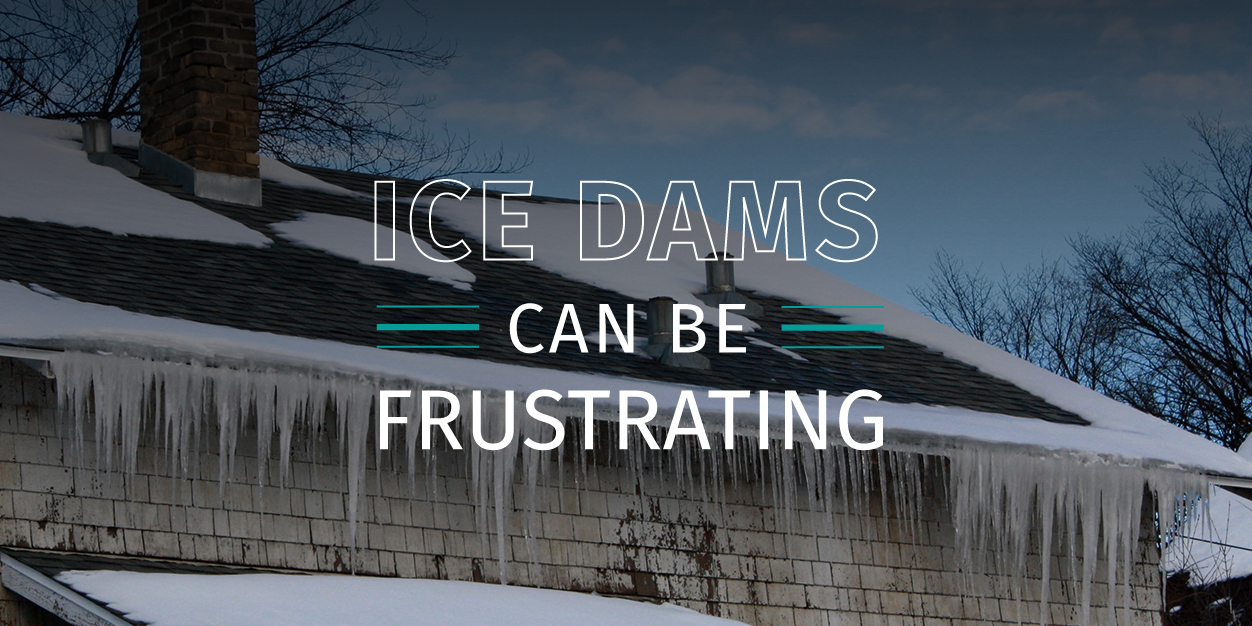Removing an ice dam, or a wall of ice that forms at the edge of your roof can be quite dangerous if you don’t know what you’re doing. Often times people will try to remove the entire gutter from the house, thereby removing the ice dam from the house. But this usually results in severe damage to the roof and gutter system. Then, come springtime the water isn’t properly directed and the melted spring water just ends up flooding your basement. So refrain from ripping your gutters away from your home.

Instead, try to clear as much snow as you can from your roof. Do so, by standing a few feet back from the eaves and use a roof rake. A roof rake is a specially designed tool to remove snow. They’re usually made out of aluminum where the prongs of a regular rake would be.
As much as you’ll want to, try not to break up ice dams. Trying to break up any ice dams can result in damage to your shingles. Refrain from dragging snow across your roof to get it off. This can also cause damage to your shingles. Carefully removing the snow behind ice dams will stop both water damage and ice build up behind the dam.
When it comes to removing icicles, it’s not only important to remove them to prevent them from falling on people but to also reduce the weight on gutters.
Now that you’ve removed all the hanging ice from around the perimeter of your roof, here’s how to prevent it from coming back next winter.
- Be sure to properly ventilate and insulate your attic
- Replace small slatted vents with larger vents
- Install electric fans in the inside of your vents
Adding fans and proper ventilation can regulate the temperature of your home and will pull in outside air into your attic to keep temperatures consistent. Too much heat underneath your roof can cause the snow and ice on top of your roof to melt creating ice dams and encouraging icicle growth. For more ways to prevent ice dams, check out our blog, 3 Steps to Prevent Ice Dams.
If ever the job seems overwhelming you can always hire a roofing contractor or call us at (877) 244-1055. For more information on how to take care of your home during winter check out our post on Preparing Your Home for Winter.